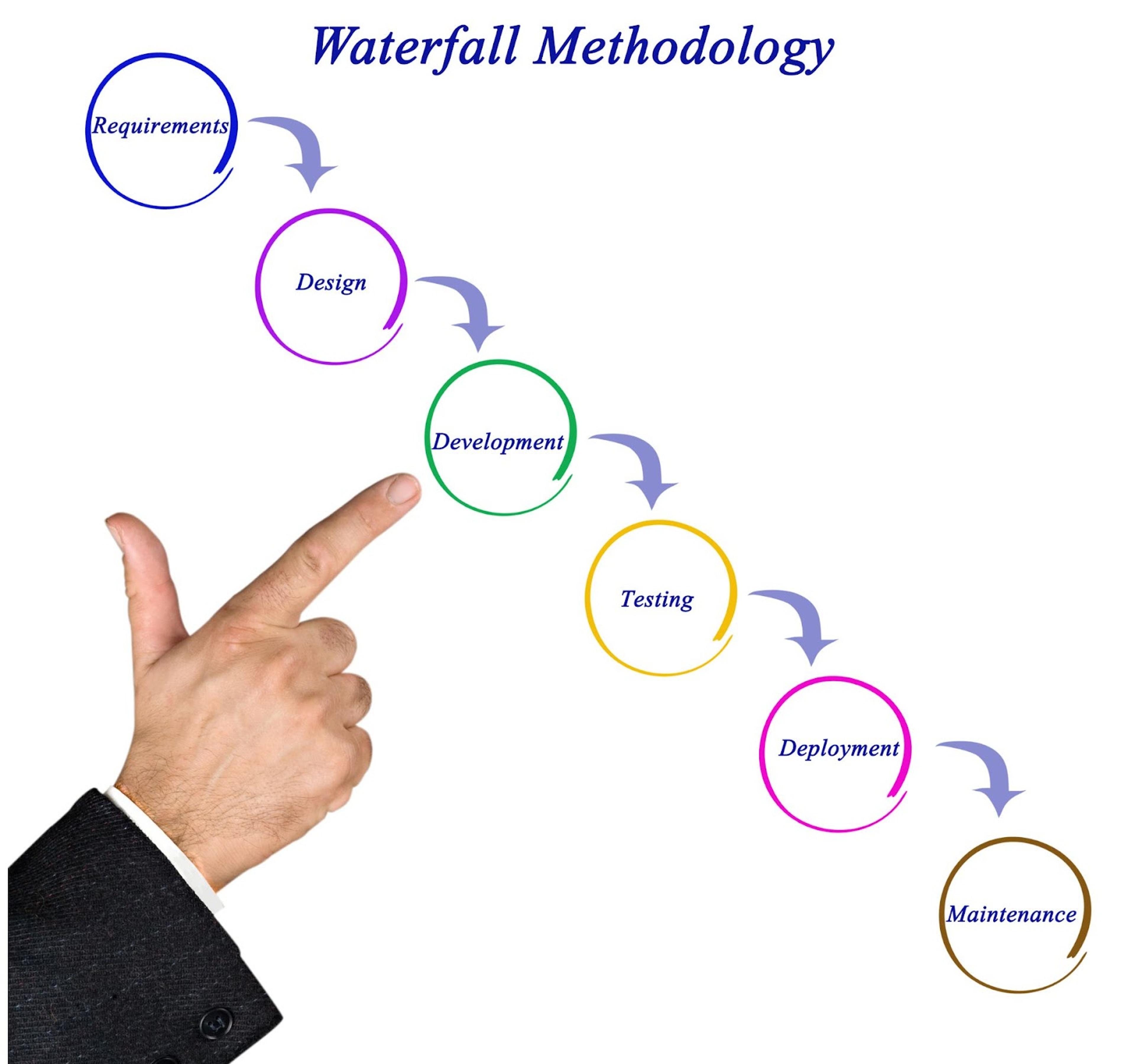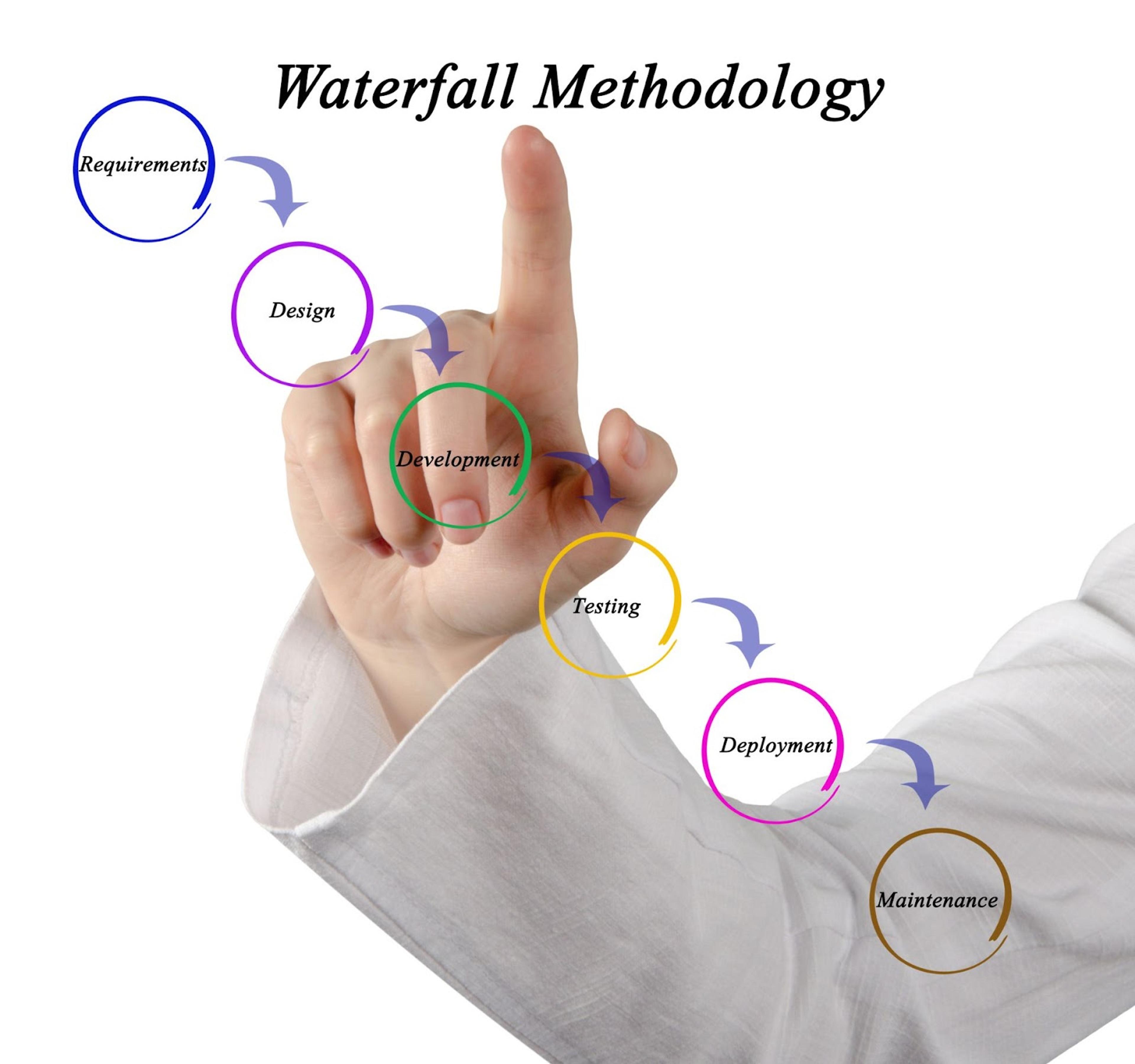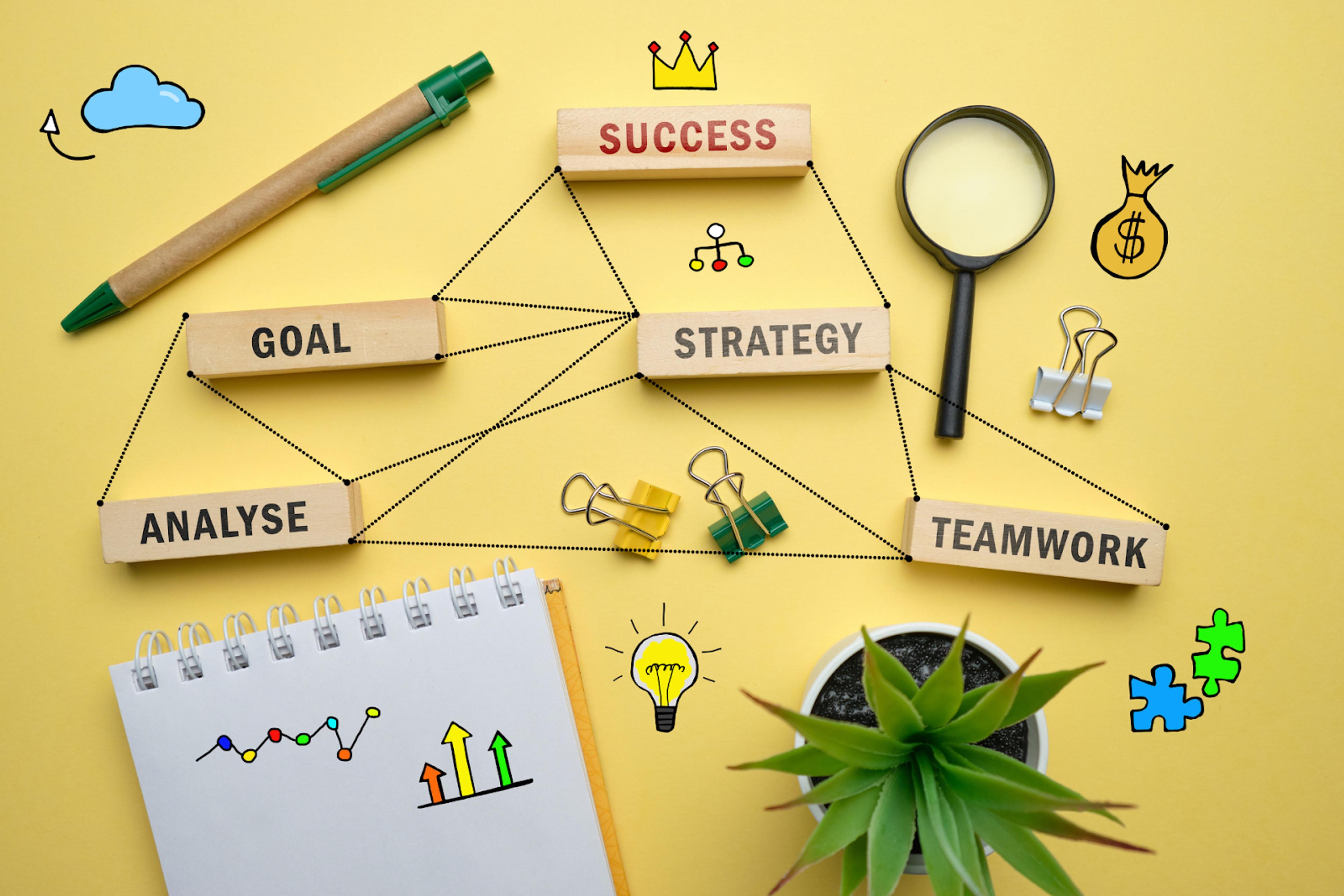Waterfall Methodology in Project Management: Comprehensive Guide
Looking for a comprehensive guide to the waterfall methodology? Look no further! This article on the waterfall definition covers everything about this popular project management approach.
Posted June 13, 2025

Join a free event
Learn from top coaches and industry experts in live, interactive sessions you can join for free.
Table of Contents
The Waterfall methodology is one of the most prominent project management methodologies, known for its structured, linear approach to delivering projects. By ensuring that each phase is completed before transitioning to the next, the Waterfall model provides clarity and predictability for teams managing complex projects. Unlike Agile project management, which emphasizes adaptability and iterative progress, the Waterfall project management process is best suited for projects with static requirements and clearly defined goals.
This guide explores the nuances of the Waterfall methodology, its history, benefits, drawbacks, and real-world applications. Additionally, it compares Agile vs Waterfall project management to help organizations make informed decisions about which methodology aligns with their needs.

What Is the Waterfall Methodology?
The Waterfall methodology operates on the principle of sequential development, where every phase flows into the next, much like a cascading waterfall. Its framework is designed to follow a defined sequence of execution – starting with planning, transitioning through design and implementation, and concluding with testing and maintenance. This approach ensures that all prerequisites are fulfilled before moving to the next phase.
Key features of the Waterfall project management methodology
The Waterfall methodology follows a linear workflow, ensuring a step-by-step approach with no overlapping of stages. This structure enables predictable timelines, allowing for accurate planning and budgeting. Additionally, its emphasis on comprehensive documentation provides clarity for both stakeholders and team members, ensuring alignment throughout the project.
In contrast, Agile development promotes iterative cycles, allowing for continuous improvement based on customer feedback. However, the Waterfall project approach is more suitable for industries like construction, government projects, or traditional engineering, where deviation from plans is not feasible.
History of the Waterfall Methodology
The Waterfall model was first introduced by Winston W. Royce in 1970 to standardize software development processes. Royce's structured approach quickly gained traction, becoming the foundation of modern software development life cycles. The methodology offered a level of discipline that was previously absent, making it invaluable for large-scale engineering and product development processes.
During the 1980s and 1990s, the Waterfall methodology dominated the software industry, particularly for projects with rigid requirements. However, its popularity began to wane with the rise of Agile practices, which prioritize collaboration, adaptability, and shorter development cycles.
Phases of the Waterfall Methodology

The Waterfall project management process is divided into five distinct phases, each critical for project success. Here’s a deeper look at these project phases:
1. Requirements Gathering
This phase is foundational, as it defines the project scope, objectives, and deliverables. Teams work closely with stakeholders to document functional and technical requirements, ensuring alignment. Without clear requirements, projects risk costly delays and errors during later stages.
2. Design Phase
The design phase focuses on creating a blueprint for the project. This includes defining the system architecture, selecting appropriate technologies, and developing technical specifications. Teams also outline workflows and dependencies to streamline implementation. A robust design phase ensures that the project is set up for success and helps avoid pitfalls during development.
3. Implementation Phase
In the implementation phase, developers begin building the system according to the design. This involves coding, creating databases, and configuring systems. Clear documentation and communication within the development team are crucial for maintaining quality and adhering to timelines. Teams must also plan for integration testing to ensure components work cohesively.
4. Testing and Quality Assurance
Testing is a critical part of the software development process. This phase involves validating the system against the defined requirements through unit tests, user acceptance tests, and performance evaluations. Teams use user feedback and test results to identify and resolve defects before deployment.
5. Deployment and Maintenance
The final stage involves releasing the product and ensuring it operates as intended. This phase includes addressing post-launch issues, conducting updates, and ensuring long-term functionality. A robust maintenance phase is vital for keeping the system relevant and reliable over time.
Advantages and Disadvantages of the Waterfall Methodology
The Waterfall methodology is a structured project management framework that offers a clear and predictable approach to managing projects. It's a linear workflow with sequential phases that are particularly beneficial for projects with well-defined requirements and objectives.
However, while the methodology is ideal for delivering precision and thoroughness, it also has limitations that can make it less suitable for dynamic or fast-evolving projects. Understanding both the strengths and weaknesses of the Waterfall project management methodology is crucial for determining whether it aligns with a project’s needs.
Advantages
The Waterfall methodology provides several key advantages that make it a reliable choice for many industries:
- Predictability - The linear structure ensures accurate forecasting of timelines and budgets, allowing for better resource allocation and planning.
- Clarity - Detailed documentation and sequential execution reduce ambiguity, ensuring all stakeholders and team members are aligned.
- Thorough testing - With testing occurring after development, the methodology allows for a comprehensive quality check, addressing potential issues before deployment.
- Structured approach - The Waterfall model is particularly effective for businesses requiring compliance with regulatory standards or rapid responses to specific requirements.
- Ease of adoption - Teams unfamiliar with iterative methods benefit from the step-by-step guidance provided by the methodology's structured workflow management.
Disadvantages
Despite its benefits, the Waterfall methodology comes with certain drawbacks that can pose challenges:
- Inflexibility - Adapting to new requirements is difficult once a project is underway due to the rigid, sequential structure.
- Lengthy timelines - The inability to overlap phases can extend the project timeline, making the approach less suitable for industries that prioritize quick delivery.
- Lack of collaboration - The siloed nature of the phases can reduce communication and collaboration between teams, including development and operations teams, leading to inefficiencies.
Agile vs Waterfall Project Management Approach
The debate between Agile vs Waterfall project management often boils down to flexibility versus structure. Agile teams, with their focus on continuous delivery and adaptability, thrive in environments where requirements frequently change. Meanwhile, Waterfall project teams benefit from stability and predictability. Choosing between the two depends on project complexity, industry demands, and team preferences.
For instance, the example Atlassian Agile Coach demonstrates how Agile facilitates collaboration and scalability in software projects. However, Waterfall project management approaches excel in environments requiring detailed planning and stringent execution.
Real-Life Applications of the Waterfall Model
The Waterfall methodology has been a cornerstone in various industries where structure, predictability, and thorough planning are essential. Its linear and sequential approach provides an ideal framework for projects with clearly defined objectives and fixed requirements. Here are some notable examples of its application:
Construction Projects
One of the most iconic examples is the construction of the Hoover Dam, a monumental engineering feat completed in the 1930s. The project's success relied heavily on a structured, linear approach akin to the Waterfall project management process, ensuring safety, precision, and timely execution.
In construction, the Waterfall model excels due to its emphasis on detailed planning, as every phase—design, procurement, construction, and testing—is critically dependent on the completion of the previous one.
Software Development
During the early years of software development, the Waterfall methodology was widely adopted to manage large-scale projects. For example, the development of critical systems such as banking software or early government databases relied on Waterfall’s clear documentation and sequential stages to ensure stability and accuracy.
By adhering to predefined phases like requirements gathering, design, coding, and testing, teams were able to deliver reliable products in environments where change was minimal or undesirable.
Aerospace and Defense
Industries like aerospace and defense also benefit from the Waterfall model due to their reliance on stringent quality standards and fixed project requirements. These sectors require comprehensive documentation, rigorous testing, and a clear chain of approvals at every stage, making Waterfall an ideal fit.
Manufacturing and Product Development
In product development, particularly in industries like automotive or electronics manufacturing, the Waterfall model ensures that every component is designed, tested, and assembled in a precise order. This structured approach minimizes errors and ensures that products meet safety and performance standards.
How to Succeed with the Waterfall Methodology
Implementing the Waterfall methodology effectively requires careful planning, proactive monitoring, and clear communication among all stakeholders. While its structured nature provides a solid foundation, success often hinges on how well the methodology is executed. Here are tactical steps to ensure a project thrives under the Waterfall framework:
1. Plan extensively
The success of a Waterfall project begins with meticulous planning. Break down the project into clearly defined phases—requirements gathering, design, implementation, testing, and maintenance. Assign roles early on, ensuring each member of the development team understands their responsibilities. Document every aspect of the project, including timelines, budgets, and deliverables, to prevent ambiguity. Tools like Microsoft Project can assist in creating detailed roadmaps and identifying potential bottlenecks before they occur.
2. Monitor progress rigorously
Tracking progress is crucial in the Waterfall project management process because each phase depends on the completion of the previous one. Use robust workflow management process scaling tools to monitor deliverables, milestones, and deadlines.
Regularly evaluate performance against the predefined project timeline to ensure the team stays on track. Establish checkpoints between phases to review progress and address any risks that may impact subsequent stages.
3. Encourage cross-team communication
While the Waterfall methodology inherently emphasizes siloed phases, fostering communication between teams is essential. Facilitate regular meetings to ensure alignment between stakeholders, including the development and operations teams.
For example, sharing progress during the design and testing phases can uncover potential issues early, saving time and resources later. Emphasizing collaboration between small self-contained teams can also help streamline workflows and minimize misunderstandings.
4. Address testing and quality assurance thoroughly
Allocate sufficient time and resources to the testing phase to identify and resolve issues before deployment. Conduct a variety of tests, including stress tests, usability tests, and user acceptance tests, to ensure the product meets its requirements.
Teams should also seek user feedback during this phase to address concerns that might not have been evident earlier.
5. Adopt a risk mitigation plan
While the Waterfall model provides structure, unforeseen risks can still arise. Develop a contingency plan to address potential challenges, such as budget overruns, delays, or changes in stakeholder expectations. Regularly review risks and update mitigation strategies to keep the project on track.
6. Incorporate feedback during maintenance
The maintenance phase is critical for ensuring the product remains functional and relevant. Gather and analyze customer feedback post-deployment to prioritize updates and bug fixes. A proactive maintenance strategy not only enhances user satisfaction but also extends the product’s lifecycle.
The Future of the Waterfall Methodology
The Waterfall methodology continues to hold relevance, particularly in industries and projects where structure, predictability, and meticulous planning are essential. While Agile program practices have gained dominance due to their adaptability and iterative nature, Waterfall remains indispensable for projects with fixed requirements, stringent regulatory standards, and clearly defined deliverables.
One of the key reasons the Waterfall project management methodology endures is its ability to align with environments requiring compliance and formal documentation. For industries such as construction, aerospace, healthcare, and government projects, the method’s emphasis on a defined sequence of execution ensures accountability and thorough oversight at each stage.
Key Considerations for Future Use
For organizations considering the Waterfall methodology, the following strategies can ensure its continued success:
- Assess project suitability – Focus on projects with static requirements, such as infrastructure development or highly regulated industries.
- Leverage advanced tools – Utilize modern software to monitor progress, manage risks, and streamline workflows.
- Consider hybridization – Integrate Agile program practices where adaptability is beneficial, such as during implementation or testing phases.
- Train teams for dual frameworks – Equip teams with skills to navigate both Waterfall and Agile methodologies, enhancing overall flexibility.
Secure Project Success with Expert Guidance
The Waterfall methodology continues to be a reliable framework for projects requiring structure, predictability, and precision. While Agile and hybrid approaches cater to dynamic and fast-paced industries, Waterfall remains indispensable for environments with fixed requirements and rigorous compliance needs. By leveraging its strengths and addressing its limitations, organizations can achieve exceptional outcomes in both traditional and modern contexts.
For teams seeking to excel in project management, expert guidance can provide the edge needed to navigate methodologies effectively. Top Product Management Coaches offer strategic insights and tailored support to ensure project success, whether managing with Waterfall, Agile, or a hybrid approach.
FAQs
What best describes the waterfall project management methodology?
- Created in the eighties, the Waterfall methodology refers to being able to move quickly and easily through a project by combining and eliminating tasks. Created in the seventies, the Waterfall methodology refers to the sequential ordering of phases, including initiating, planning, executing, and closing.
What is the main advantage of the Waterfall methodology?
- As it is so intuitive, an advantage of Waterfall is that it allows you to start right away. You don't need to assign specific roles or training sessions to qualify for a certificate or even bring in model specialists. Everybody can run with the Waterfall model.
What is an important reason why the Waterfall methodology was replaced?
- The important reason why the Waterfall Methodology was replaced is that it did not support the need for changes in software development. The Waterfall Methodology followed a linear approach where each phase of software development had to be completed before moving on to the next phase.
When should you use the waterfall methodology?
- Waterfall is best for projects with concrete timelines and well-defined deliverables. If your major project constraints are well understood and documented, Waterfall is likely the best approach. The Agile methodology was created for complex projects where the significant constraints are not well understood.
What is the main problem with the waterfall model?
- Disadvantages of the Waterfall model typically center around the risk associated with a lack of revision and flexibility. Specific issues include the following: Waterfall design isn't adaptive; when a flaw is found, the entire process often needs to start over.
What is the best way to describe the agile approach to work?
- The Agile methodology is a project management approach that involves breaking the project into phases and emphasizes continuous collaboration and improvement. Teams follow a cycle of planning, executing, and evaluating.
What Types of Projects Are Best Suited for the Waterfall Methodology?
- The Waterfall methodology is ideal for projects with well-defined requirements, fixed scopes, and minimal expected changes. This includes industries like construction, manufacturing, government contracts, and large-scale engineering projects. It is particularly effective for projects where regulatory compliance and thorough documentation are critical, as its linear and sequential approach ensures that every phase is completed and approved before moving forward. For dynamic projects with evolving requirements, Agile or hybrid methodologies may be a better fit.
Browse hundreds of expert coaches
Leland coaches have helped thousands of people achieve their goals. A dedicated mentor can make all the difference.


























